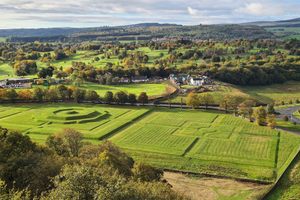About
High up on a hill, overlooking the River Forth with views of the Wallace Monument and surrounding vistas stands a chunk of stone with a dark past. Origins of the stone remain unknown. According to local legend, the stone was used for beheadings in the 15th-century.
The stone stands atop a place in Stirling, Scotland, that’s also called "Mote Hill" or more appropriately named "The Heading Hill," a spot where an ancient Pictish Fort once stood. Over time, this area became the place where King James I would have his enemies dispatched. Beheadings were specifically reserved for individuals found guilty of committing treason. Most notably was that of Murdoch, Duke of Albany in 1425, the grandson of King Robert II, founder of the Stewart Dynasty.
Today, the stone no longer serves as a chopping block. It’s covered by a metal cage and rests on a large, white, circular pillar with a metal plaque reading; "Beheading Stone, Protected by the Public at the Insistence of the Stirling National History & Archaeological Society 1887." There is an information placard nearby, as well as a couple of cannons. A wooden block would be placed on top and holes can be seen in the stone where this would have been secured.
Retributive justice was eventually moved to Mercat Cross and the Tolbooth, Broad Street.
Related Tags
Know Before You Go
The stone is a 15-to-20-minute walk from Stirling Castle and can be reached via the Back Walk footpath or from Crofthead Road. Though it is accessible 24 hours a day, it is not recommended at night or in foul weather. There is evidence that people use the surrounding area as a "party scene" and the walk up to it can be quite hazardous.
Flavors of Scotland: Beyond the Haggis
Smoked seafood, single malt whisky, and warm hospitality.
Book NowPublished
January 16, 2019


































